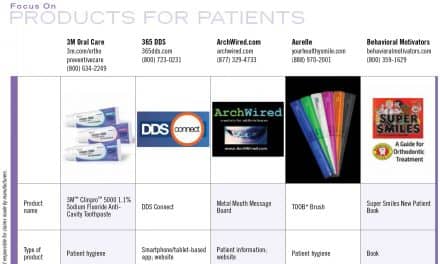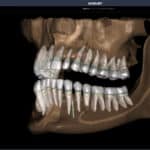Align Technology’s Srini Kaza details how large-scale and direct 3D printing are reshaping orthodontic care and what private practices can expect in the back half of 2025.
3D printing is no longer just a behind-the-scenes manufacturing tool—it’s become a front-line driver of innovation in orthodontic care. For Align Technology, the company behind Invisalign, additive manufacturing has long been central to its identity. With more than one million custom aligner parts produced daily, Align operates the largest 3D printing operation in dentistry. But in 2025, the company is taking that capability even further, investing in direct 3D printing technologies that eliminate the need for molds, reduce material waste, and increase appliance precision. The company’s 2024 acquisition of Vienna-based Cubicure accelerated this shift, bringing together high-performance resins, hot lithography, and Align’s AI-driven design platform to fuel a new era of digital orthodontics.
These developments point to a mid-2025 inflection point where mass customization, AI-assisted workflows, and in-office 3D printing begin to converge. To explore what this means for private practice orthodontists, Orthodontic Products spoke with Srini Kaza, Align’s executive vice president of product research and development.

Orthodontic Products: Align has been using 3D printing in aligner production for over two decades. How has the role of this technology evolved within your manufacturing processes in 2025 compared to earlier years?
Srini Kaza: As the pioneer and a global leader in clear aligners with the world’s largest 3D printing operations producing over 1 million custom appliances every day, Align is continuing to innovate and invest in technologies that enable the next generation of direct 3D printed products, evolving manufacturing processes and creating more sustainable and efficient solutions.
In the early years of Align Technology, 3D printing was available, but nothing like at the scale it is now. Align Technology invested significantly to create a production 3D printing process including creating highly scalable and automated digital processes, modification of printers, creation of post processing equipment, and creation of custom resins to scale. We had to invent several pieces of technology and workflows since there were no systems that could enable mass-production of devices including clear aligners.
While we continue to invest heavily into innovating our current processes, we are also investing in direct printing technologies. Direct 3D printing enables Align to create solutions without the added first step of creating a mold, making 3D printing more ecologically sustainable than current processes and more efficient.
We are delivering on the promise of 3D technology that is part of Align’s DNA with direct 3D-printed orthodontic devices—demonstrating our commitment to pushing the boundaries of digital orthodontics. The first example is the Invisalign Palatal Expander System, a series of removable devices that expand a patient’s palate without traditional metal expanders and screws in a way that is both effective clinically and comfortable and easy to use for kids and parents. This is Align’s first commercialized direct 3D printed appliance. With other products in development, we believe direct 3D printing will give doctors new levels of precision in appliance fit and shape to deliver the best possible outcomes for patients.
OP: With Align producing nearly a million unique aligner parts daily through 3D printing, what does that scale of production mean for orthodontic practices and their ability to deliver personalized care?
Kaza: The scale of Align Technology’s production—more than a million unique aligner parts daily—has significant implications for orthodontic practices and their ability to deliver personalized, efficient care. With the advanced 3D printing available today, Align can offer doctor customers mass customization at a large scale. This allows Align to help doctors expand access to personalized treatment and increase the number of patients they’re able to treat.
When combined with 3D printing, SmartTrack—a patented, innovative multi-layer polymer— delivers more gentle, constant force to improve control of tooth movements with Invisalign clear aligners, enabling more personalized care.
Tools across the Align Digital Platform have also enabled doctors to reduce treatment planning time. Digital solutions have helped meet new patient demands for efficient, personalized care with less chair time.
OP: Align acquired Cubicure in early 2024 to strengthen its 3D printing capabilities. How has that integration influenced your current R&D efforts or product innovation?
Kaza: We believe the acquisition of Cubicure has supported and scaled Align’s strategic innovation roadmap and strengthened the Align Digital Platform, an integrated suite of unique, proprietary technologies and services delivered as a seamless, end-to-end experience and workflow that connects users.
Cubicure has extended our ability to scale Align’s printing, materials, and manufacturing capabilities for its 3D printed product portfolio, including the Invisalign Palatal Expander System. Its patented Hot Lithography technology uses a special heating and coating mechanism that enables the processing of highly viscous resins to produce particularly tough and temperature-resistant polymers. This high-precision 3D printing process facilitates the additive manufacturing of resilient components with an astonishing first-of-its-kind material quality performance.
Cubicure has helped Align advance our R&D pipeline and allows us to have control over every step of 3D printing, speeding up development and driving a future where devices are printed directly, more efficiently and cost effectively.
While we have started our direct printing journey with the Invisalign Palatal Expander, we expect to eventually offer other direct printed products that will enable our doctors to deliver more efficient treatments—with the goal to direct 3D print Invisalign clear aligners.
OP: For orthodontists considering new in-office 3D printing solutions, what lessons or considerations from Align’s experience would you say are most relevant?
Kaza: 3D printing has become much more prevalent and easier to implement in the practice over the years. There are many options available for doctors that can sometimes be confusing. We believe orthodontists should look at all aspects of implementing 3D printing including print consistency and reliability, data preparation and processing workflows, post processing techniques including solvent management, disposal process for used materials and finishing and processing needed for the printed parts. Doctors also may need to consider their business goals and cost effectiveness of running a 3D printer in their offices, so material and disposal costs, as well as process and labor times might be important considerations. We would also advise taking a close look at the safety profiles of the materials as this is likely to be paramount for orthodontists across the board.
OP: As we look toward the second half of 2025, what advancements in 3D printing technology do you see shaping the future of orthodontics—either in-office or at the industry level?
Kaza: We expect to see continued innovation from all 3D printing companies in terms of ease of use, speed, efficiency, etc. In addition, AI will likely play a significant part in terms of allowing for easier design and process automation. One of the biggest advancements we expect to see is a rise in direct 3D printing of custom appliances. This drives efficiencies during treatment and allows for greater aligner customization to deliver the rapid, personalized treatment that patients want.
Orthodontists may also see an increase in the use of AI-driven treatment planning. Align Technology leverages aggregated and anonymized data from over 20 million Invisalign cases to help Invisalign-trained doctors plan predictable treatment outcomes for their patients. We’re continually innovating and expanding the Align Digital Platform—a unique combination of software, systems and services designed to provide a seamless experience and end-to-end workflow that integrates and connects all users—doctors, labs, patients, and consumers.
OP: What are some of the practical challenges or limitations in 3D printing today that you believe the industry still needs to solve, particularly in the context of orthodontic treatment?
Kaza: We believe there are multiple aspects of 3D printing that need to continue improving and innovating. These include high performance polymers that can effectively work in the mouth, high safety of these materials, process consistency, elimination of chemicals in the process and recyclability of the materials. In addition, high speed production at high quality will be a key factor. At Align, we believe that we have solved many of these challenges with our current production and continue to work on innovations for the next generation of technologies that will better serve the orthodontists. OP
Opening Image: ID 146289614 | 3d © Lishchyshyn Oleksii | Dreamstime.com
Headshot: Align Technology









